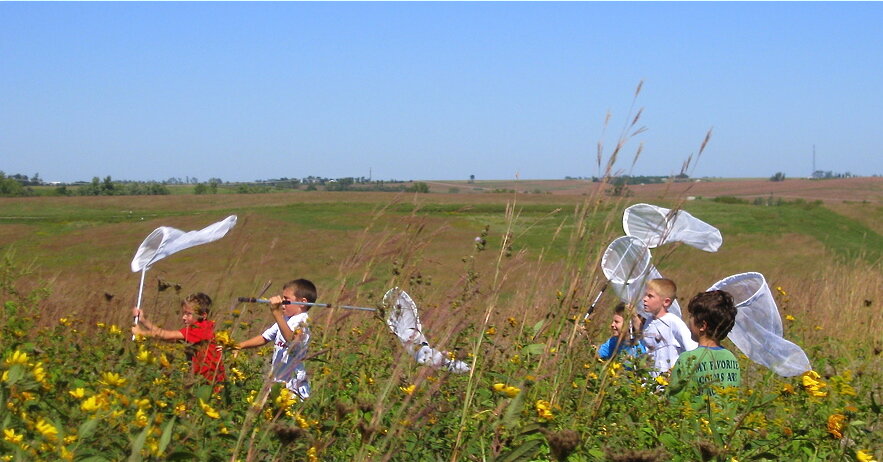
Harmonizing Pesticide Use and Species Conservation
Why do we work on this issue?
Every year, federal wildlife agencies review roughly 10,000 activities for compliance with the Endangered Species Act. These activities include widening highways, installing electrical transmission lines, clearing land for new homes, and hundreds of other types of projects. Most of the reviews are completed without major complications or delays, and irresolvable conflicts with endangered species are very rare partly because there are ways to avoid, minimize, or offset impacts to species.
The US EPA’s decision to register a pesticide is subject to this same requirement. Before EPA registers a pesticide, it must work with our federal wildlife agencies to ensure that the registration won’t violate the ESA’s prohibition on jeopardizing a species or harming its critical habitat. But for decades, EPA registered pesticides without completing this review. As a result, most pesticides used in the US today haven’t been assessed under the ESA for their possible effects on any of the over 1,660 endangered species.
At EPIC, we work on this problem for two major reasons. First, many endangered species are likely not receiving the full protections they need from exposure to pesticides. Although EPA does use the federal pesticide law (FIFRA) to require certain restrictions on pesticide use, those restrictions might not always be enough to meet the ESA’s requirement of no-jeopardy. That’s because the FIFRA approval standard differs from the no-jeopardy standard. Unless the ESA’s standards are also met, endangered species may be harmed more than the law allows.
A second reason is that the current situation creates political strain on the ESA. Attempts to exempt pesticides from the ESA began over three decades ago. Most recently, the House version of the 2018 Farm Bill proposed to undercut the federal wildlife agencies’ role in assessing how pesticides affect endangered species. Proposed amendments will likely continue as long as key members of Congress view the current status as unsolvable through regulatory initiatives. To counter this narrative, the environmental community’s main response is that the federal agencies can create a workable pesticide consultation program. Almost no conservation group, however, has rolled up its sleeves to help develop that program. That’s what we’re doing in collaboration with the agrichemical sector, the federal government, and other conservation organizations that seek pragmatic and enduring solutions.
Although these two reasons drive our work, there are other reasons that are important to other stakeholders and cannot be ignored. First is that the current situation places EPA, pesticide manufacturers, and their users at risk of violating the ESA. This is no trivial matter for publicly-traded companies like DowDuPont and Bayer. Nor is it inconsequential for EPA, which continues to get sued over its registration and reregistration of pesticides for which the agency has not completed an ESA review. Constant litigation and regulatory uncertainty tend to stifle investments in research and development of new pesticides by agrochemical companies. And why is that a problem? Don’t fewer new pesticides mean less pollution and more wildlife?
Not quite. Unless new chemicals are available, farmers and public health agencies will likely continue to use older chemicals, which are often more toxic or have broader environmental impacts. You might not favor using pyrethroids to control mosquitoes, but you almost certainly prefer them over DDT. And with mosquitoes showing resistance to pyrethroids, more effective approaches are needed in the coming years. Exacerbating the problem is climate change, which will continue to increase the risk of mosquito-borne diseases in the US.
Here’s another reason the pesticides-wildlife tradeoff is complex. Improving agricultural yields is essential for feeding a growing global human population without converting more wildlife habitat into farms. How can farmers improve yields? There are many techniques, but it’s impossible to dismiss more effective chemical control of weeds and insect pests as one of them at this time. As long as the global human population continues to grow, as long as more cotton is needed to clothe the growing number of people, and as long as more grain is needed to feed the world’s growing appetite, wildlife habitat will remain at risk from agricultural conversion. More effective agrichemicals that allow for higher crop yield aren’t a panacea to this problem, but we’ve yet to hear a convincing argument for why they aren’t a necessary part of a multifaceted strategy for ensuring enough land is preserved for wildlife.
In short, we see many reasons to work at the intersection of pesticides and endangered species. And we think it’s impossible to develop an enduring solution without working very closely with the federal agencies, the conservation community, Congressional offices, scientists, and—above all else, agrichemical companies and growers—to develop that program. The challenge of reconciling pesticide use with endangered species conservation is far too complex for the conservation community to look only to itself and the federal agencies for solutions. For example, how do we develop conservation measures to reduce pesticide runoff into a creek without working collaboratively with landowners, pesticide producers, and others who have direct control over the situation? How will the U.S. Fish and Wildlife Service review the possible effects of pesticides on over 1,500 species without considerable help from pesticide manufacturers and their customers, who often have the most information on ecotoxicology and pesticide usage?
We collaborate with pesticide manufacturers, grower groups, and others in the regulated community who share our goal of improving the ESA pesticide program, so that it works better for both wildlife and farmers. We see no other option. The agriculture and agrichemical sectors have tremendous resources, political capital, and other advantages that they could steer toward a solution. And many of them have already begun doing exactly that, as we’ll describe below. By helping them on this journey, we’re leveraging their resources to further conservation while developing a more predictable and efficient ESA pesticide process.
What are we doing to help solve the problem?
Our current work falls into three broad categories.
First are partnerships to develop conservation programs to avoid, minimize, or offset the potential effects of pesticides on endangered species. For example, we are working with Syngenta and the federal government to design a program in which a pesticide manufacturer would help fund conservation measures for endangered species. The benefits from those measures would then be used to help offset the potential effects of pesticide use on those species. This leaves the species better off than without those measures and reduces the risk of the pesticide violating the ESA’s jeopardy prohibition. The approach, called compensatory offsets, is widely used with many other types of activities that require ESA review. But it has never been used with pesticides. We see this as a very obvious opportunity to get more conservation on the ground and to improve the pesticide review process.
Second are partnerships to improve the scientific foundation of pesticide reviews. For many endangered species, even the most basic biological data are sparse or unavailable. Without this data, pesticide reviews must grapple with a lot of uncertainty and become protracted. We are working with others to help fill the data gap. One example is our work to help create detailed maps depicting where species are found. Using those refined maps, federal regulators can better determine where species are exposed to pesticides and where best to deploy conservation measures to reduce and offset those effects.
Third is our work to propose better policies, guidance, and regulations tailored to the unique challenges of ESA pesticide reviews. This work can clarify the review process and improve its efficiency for federal agencies, thus freeing their time to work on other pressing conservation matters. We are a thought leader in this arena because of our deep expertise in ESA, our creative approaches to problem solving, and our willingness to work with anyone who shares our goal. Recently, we helped draft a letter signed by a group of agricultural and conservation organizations that offered ten recommendations to improve the pesticide review process. We are encouraging the government to use this letter as a roadmap for prioritizing improvements that are already supported by a diversity of stakeholders.
Through these examples of our work, we hope you can appreciate the vital role of collaborations with the regulated community. The vast majority of the improvements we described are impossible without the active engagement of the agrichemical sector and their customers. We have already seen many companies that are enthusiastic to play some role helping to conserve wildlife and their habitat. But those companies need guidance to determine the best ways to invest in conservation and they need an incentive to carry out this investment. Conservation groups can play an enormous role helping to shape both.
How do we fund our work?
At EPIC, we fund most of our work through a combination of grants that pay for specific projects, contracts, and general financial support for the organization. Our work on pesticides is no different. We receive financial support from certain members of the agrichemical sector for specific projects, but only if the work aligns with our conservation mission and purpose. A major percentage of our pesticide work lacks any specific funding and is paid for by unrestricted donations we receive from individuals and philanthropic foundations. If you would like to learn more about providing general support for this work, we welcome a conversation with you.



